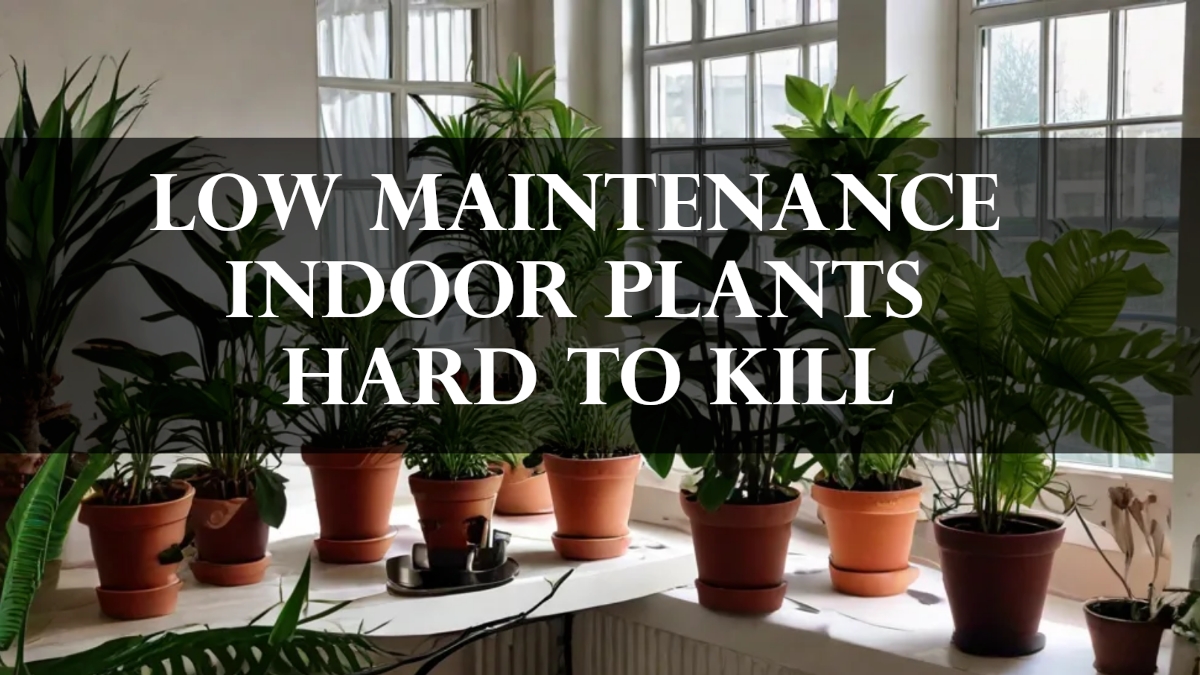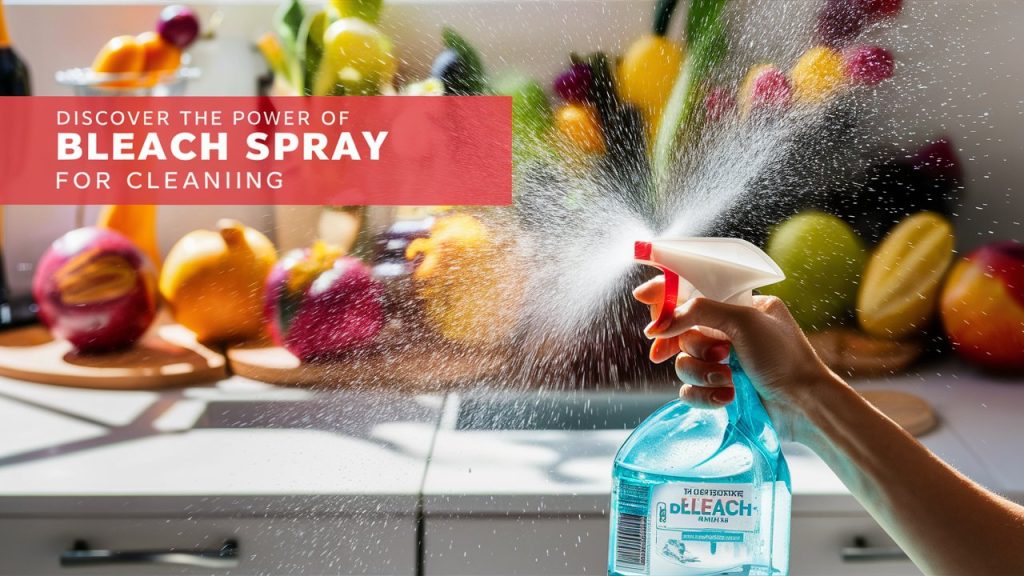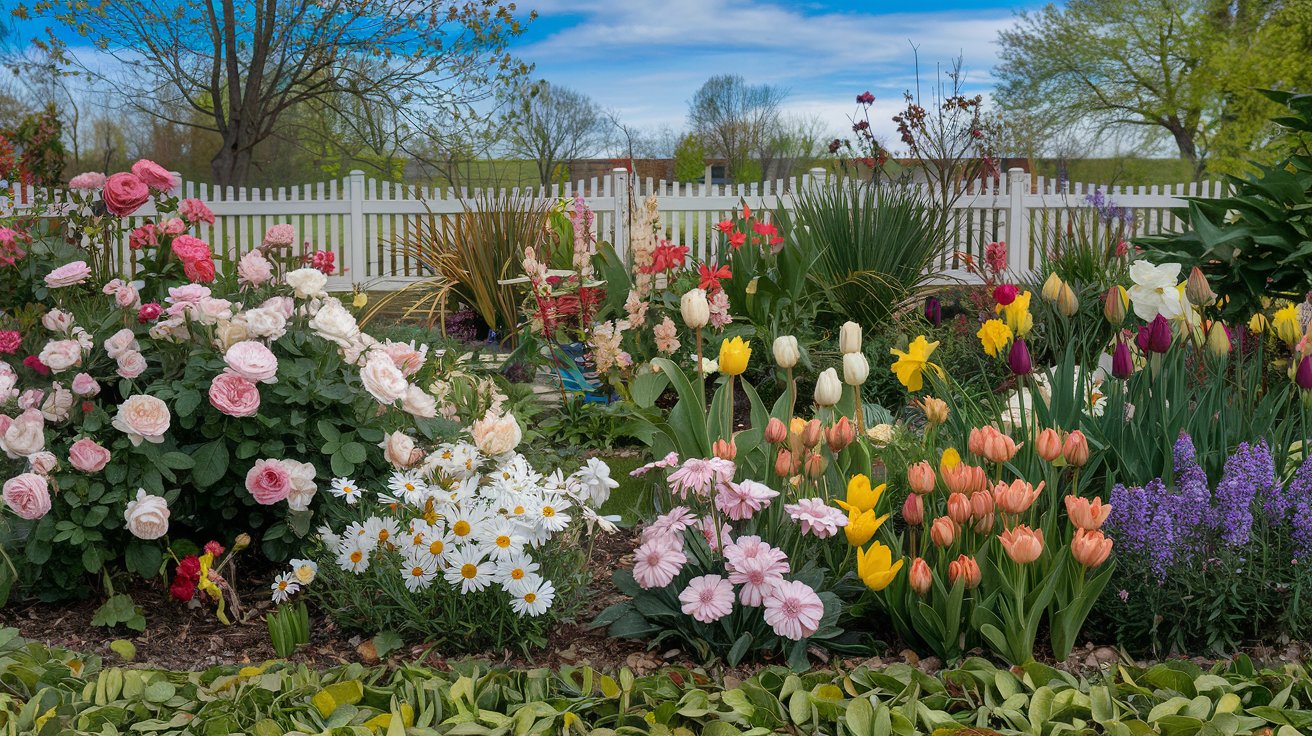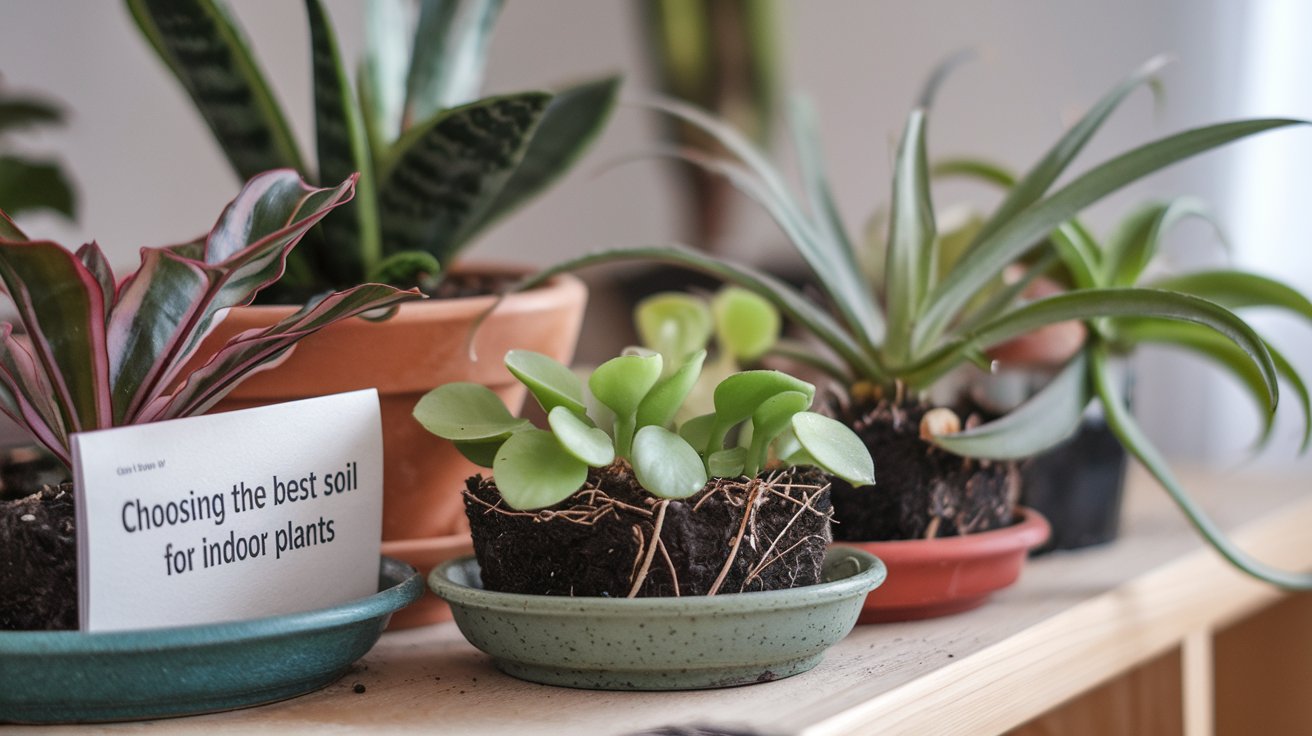Indoor Plants Hard to Kill are the unsung heroes of home decor and wellness, especially for those new to gardening or those with busy lifestyles. Incorporating plants into your living space not only enhances the aesthetic appeal but also offers numerous benefits such as improved air quality, mood enhancement, and stress reduction. However, the challenge for many is keeping plants alive amidst hectic schedules and inconsistent care. That’s where low-maintenance, hardy indoor plants come in, offering beauty without the fuss.
In this guide, we’ll explore some of the best indoor plants that require minimal effort, are adaptable to a variety of indoor conditions, and, most importantly, are incredibly tough to kill.
Key Takeaways
- Low-maintenance indoor plants are perfect for beginners, busy individuals, and those with limited gardening experience.
- These plants are highly adaptable, thriving in a variety of light and water conditions.
- Resilient plants like snake plants, ZZ plants, and pothos can survive with minimal care.
- Regular care involves minimal watering, occasional pruning, and ensuring proper light exposure.
Table of Contents
Table: Comparison of Best Low-Maintenance Indoor Plants
| Plant Name | Watering Frequency | Light Preference | Growth Rate | Ideal Temperature |
| Snake Plant | Once every 2-3 weeks | Low to Bright | Slow | 60-85°F |
| ZZ Plant | Once every 2-3 weeks | Low to Bright | Slow | 65-75°F |
| Pothos | Once every 7-10 days | Low to Bright | Moderate | 65-85°F |
| Spider Plant | Once a week | Bright, Indirect | Moderate | 60-75°F |
| Peace Lily | Once a week | Low to Bright | Moderate | 65-80°F |
Why Choose Indoor Plants Hard to Kill?
The main reason people gravitate toward indoor plants hard to kill is their low maintenance requirements. These plants thrive on neglect and can tolerate a variety of conditions that might harm other, more delicate species. For busy individuals, beginners, or those without a green thumb, these plants are a lifesaver. They offer the chance to enjoy the benefits of having indoor greenery without the stress of complicated care routines.
Additionally, hardy indoor plants are great for improving indoor air quality and providing a sense of tranquility. Their robust nature allows them to survive even in spaces with less-than-ideal lighting, inconsistent watering schedules, or fluctuating room temperatures. This makes them an ideal choice for people who want to enhance their home decor with plants but don’t have the time or expertise for constant maintenance.
Key Characteristics of Hardy Indoor Plants
Hardy indoor plants are known for their resilience and adaptability. Several factors contribute to their easy care and survival:
- Tolerant to Low Light: Many of these plants can grow in low or indirect light, making them perfect for rooms with limited sunlight.
- Infrequent Watering: These plants can go long periods without needing water, with some even thriving on drought-like conditions.
- Pest and Disease Resistance: Their tough nature makes them less susceptible to common plant pests and diseases, reducing the need for extra care.
- Temperature Adaptability: Hardy plants can survive in a wide range of temperatures, from warmer rooms to cooler spaces.
These characteristics make indoor plants hard to kill incredibly forgiving, even for those with no gardening experience.
Top 5 Low Maintenance Indoor Plants Hard to Kill
1 Snake Plant (Sansevieria)
The snake plant is one of the best indoor plants for beginners. Known for its tall, upright leaves and striking variegation, this plant thrives in a variety of conditions. It can survive in low light and is incredibly drought-tolerant. Watering once every two to three weeks is usually sufficient. Snake plants also act as natural air purifiers, absorbing toxins like formaldehyde and benzene.
To care for your snake plant, make sure the soil is well-draining and avoid letting it sit in water. Place it in a spot with indirect light for optimal growth.
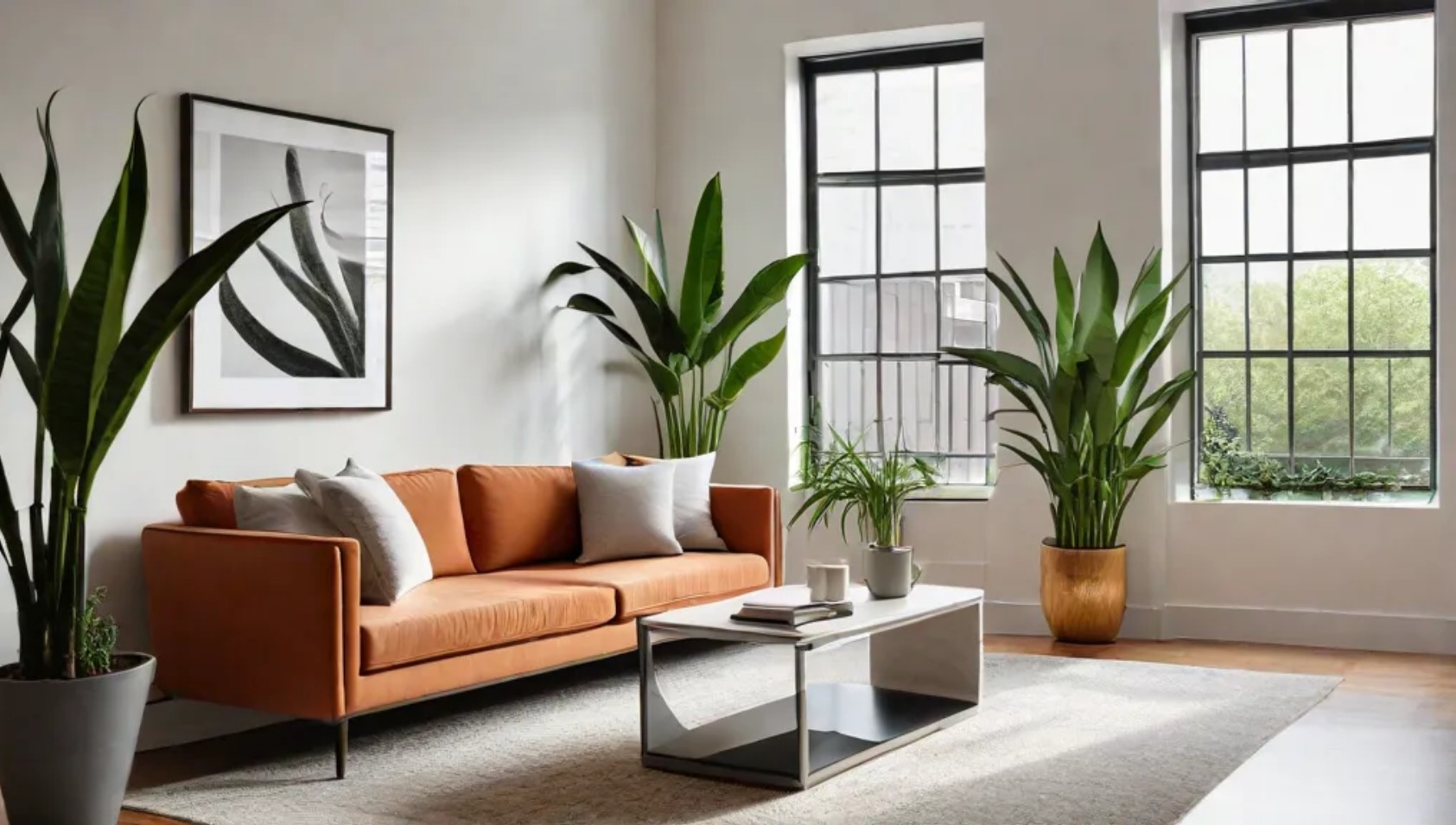
2 ZZ Plant (Zamioculcas zamiifolia)
The ZZ plant is often referred to as “indestructible.” It thrives in low-light conditions and can survive with very little water. ZZ plants are perfect for spaces that receive minimal sunlight or areas where people often forget to water their plants. Its waxy, dark green leaves also add a touch of elegance to any room.
While ZZ plants are drought-tolerant, make sure to let the soil dry out completely between waterings. They also prefer a warm environment, but can tolerate a range of indoor temperatures.
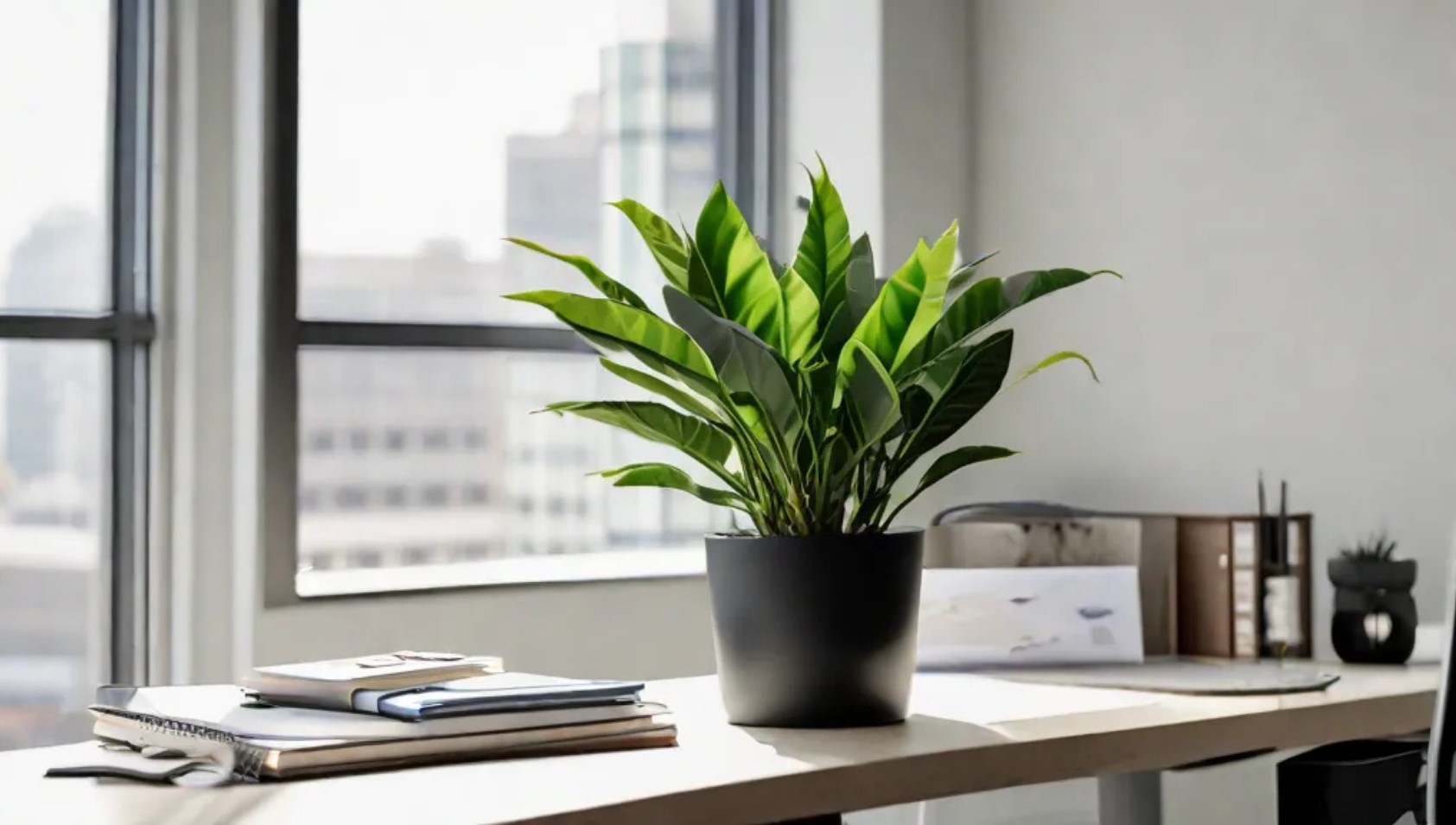
3 Pothos (Epipremnum aureum)
Pothos is another hardy indoor plant known for its trailing vines and vibrant, heart-shaped leaves. It’s often considered the go-to plant for people who are new to indoor gardening. Pothos can thrive in low to bright indirect light, making it perfect for corners and shelves. It also adapts well to irregular watering and can go for weeks without water.
One of the best things about pothos is its ability to grow in water, so you can propagate it easily by cutting the vines and placing them in a jar of water until new roots form.
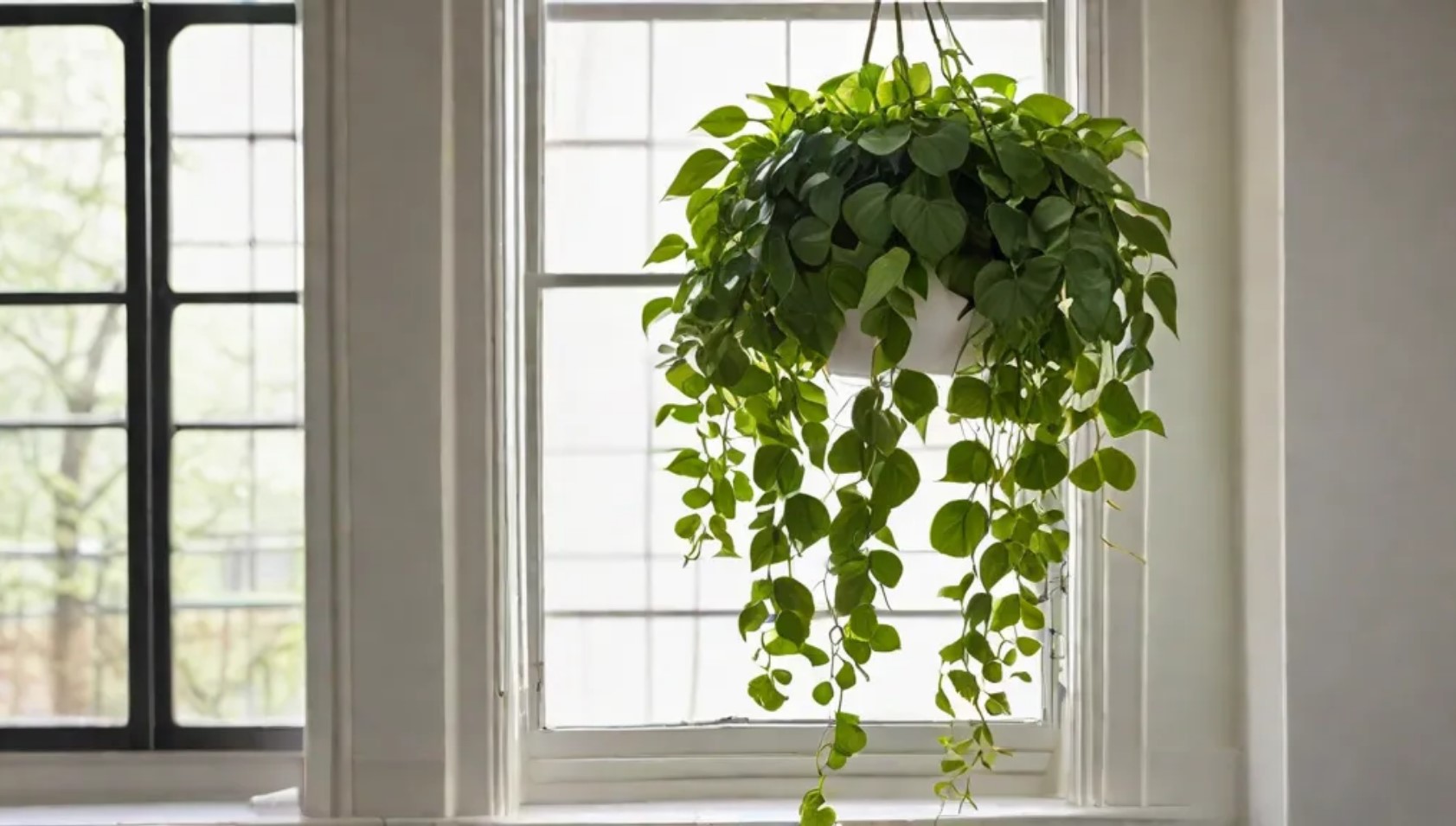
4 Spider Plant (Chlorophytum comosum)
Spider plants are charming, hardy plants with arching green leaves and small white flowers. They are excellent for improving indoor air quality and thrive in bright, indirect light. Spider plants can tolerate varying light conditions and are forgiving when it comes to watering, though they prefer their soil to be kept slightly moist.
To propagate a spider plant, you can simply cut the “babies” (small offshoots) and place them in water or soil. The spider plant is a fast grower and will soon fill out any pot or hanging basket.
5 Peace Lily (Spathiphyllum)
Peace lilies are loved for their elegant white flowers and ability to thrive in low light. These plants are not only beautiful but also easy to care for. They prefer to be kept in moderately moist soil, so water them once a week or whenever the top of the soil feels dry. Peace lilies also act as natural air purifiers by removing harmful chemicals from the air.
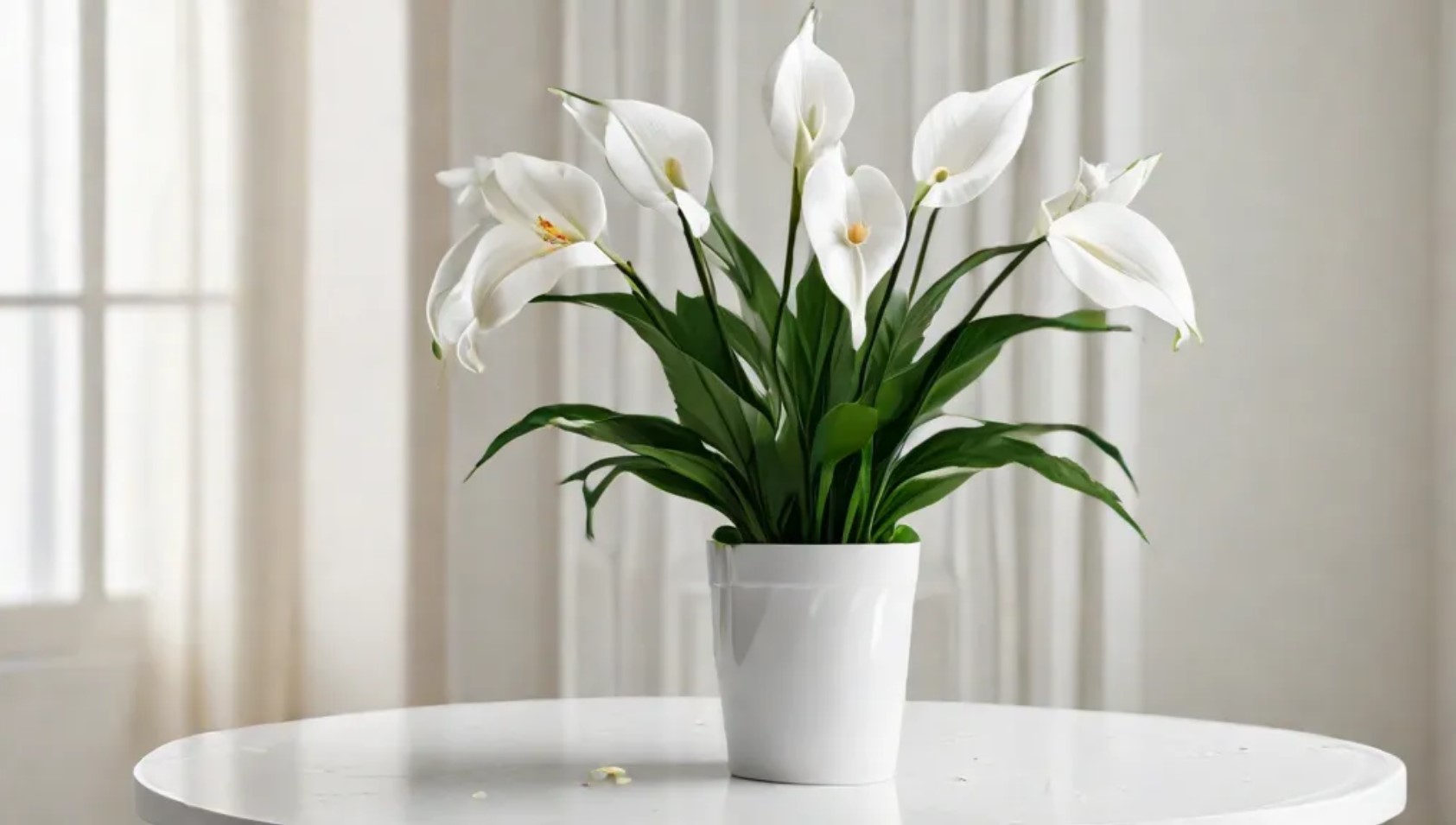
How to Care for Low-Maintenance Indoor Plants
Taking care of indoor plants hard to kill doesn’t have to be complicated. Here’s a quick breakdown of the essential care tips:
- Watering: Hardy plants are drought-tolerant and can survive on minimal water. Overwatering is one of the biggest mistakes, so always check the soil moisture before watering. When watering, allow excess water to drain from the bottom of the pot.
- Lighting: While most of these plants can survive in low light, they will do best with indirect sunlight. Keep them away from direct sunlight, which can burn their leaves.
- Temperature and Humidity: These plants thrive in a variety of indoor temperatures, but they prefer warm, humid conditions. If your home is dry, you can occasionally mist the plants or place them near a humidifier.
- Soil: Use well-draining soil for all your plants to avoid root rot. A mix designed for cacti or succulents can work well for plants like snake plants and ZZ plants.
How to Propagate Indoor Plants Hard to Kill
Propagation is a great way to multiply your collection of indoor plants hard to kill without buying new ones. Here’s how you can propagate some of the most popular plants:
- Pothos: Simply cut a healthy vine just below a node (where the leaf meets the stem), place the cutting in water, and wait for roots to form. Once roots appear, plant it in soil.
- Snake Plant: Cut a leaf into sections and let the cuttings dry for a day. Then plant the cut ends into well-draining soil. Keep the soil lightly moist until new growth appears.
Common Problems and Solutions for Indoor Plants Hard to Kill
While these plants are hardy, they’re not immune to problems. Here’s how to tackle some common issues:
- Yellowing Leaves: This can indicate overwatering or poor drainage. Make sure the soil dries out between waterings and use pots with drainage holes.
- Dropping Leaves: If your plant is dropping leaves, it may be due to changes in temperature, overwatering, or pests. Check the roots and leaves regularly to ensure no pests are present.
- Root Rot: If the plant’s roots are mushy or smelly, it could be a sign of root rot. Trim the affected roots and repot the plant in fresh, well-draining soil.
Conclusion
Low-maintenance indoor plants hard to kill offer an easy, stress-free way to bring nature into your home. Whether you’re a gardening novice or a busy professional, these resilient plants can brighten your space and improve your well-being with minimal effort. From snake plants to peace lilies, there’s a variety of options to suit any environment, helping you enjoy the benefits of indoor greenery without the hassle.
So, grab your favorite hardy plant, find a cozy spot, and start cultivating your indoor jungle today!
Frequently Asked Questions
Which indoor plant is hardest to kill?
The snake plant and ZZ plant are considered the hardest to kill due to their ability to tolerate a wide range of conditions, from low light to drought-like situations.
Can I neglect my indoor plants for a few weeks?
Yes! Hardy indoor plants can tolerate periods of neglect, but they’ll thrive better with occasional watering and proper light exposure.
How much light do indoor plants hard to kill need?
Most hardy indoor plants do best with indirect light. They can survive in low light but will grow more vigorously with a bit of natural sunlight.
How often should I water low-maintenance indoor plants?
Water them every 1-3 weeks, depending on the plant’s needs. Always ensure the soil is dry before watering again.
What temperature is best for indoor plants hard to kill?
These plants generally prefer warm temperatures between 60-80°F (16-27°C). They are adaptable to fluctuations, but extreme temperatures should be avoided.
Can low-maintenance plants grow in dark rooms?
Most hardy indoor plants can tolerate low light but will grow best in brighter spaces. However, some plants like snake plants and ZZ plants can adapt to darker conditions.
Author Bio

Robert Martin is a passionate blogger and versatile content creator exploring the intersections of personal finance, technology, lifestyle, and culture. With a strong background in financial literacy and entrepreneurship, he helps readers make smarter money moves, build sustainable side hustles, and achieve financial independence.
Beyond finance, Robert shares his insights on home decor and gardening—offering practical ideas for creating beautiful, functional living spaces that inspire comfort and creativity. He also dives into the dynamic worlds of sports and celebrity news, blending entertainment with thoughtful commentary on trends that shape today’s pop culture.
From decoding the latest fintech innovations to spotlighting everyday success stories, Robert delivers content that’s informative, relatable, and actionable. His mission is to empower readers to live well-rounded, financially confident lives while staying inspired, informed, and ahead of the curve.

